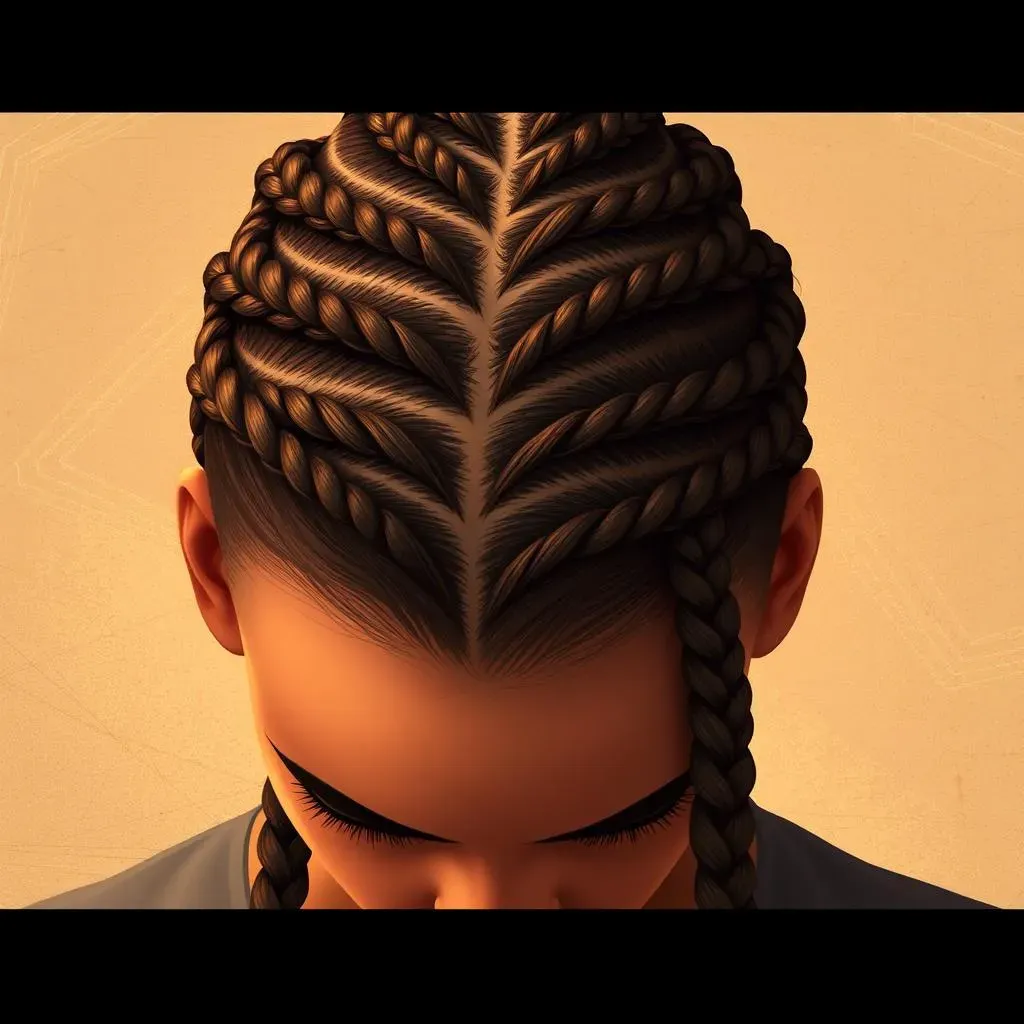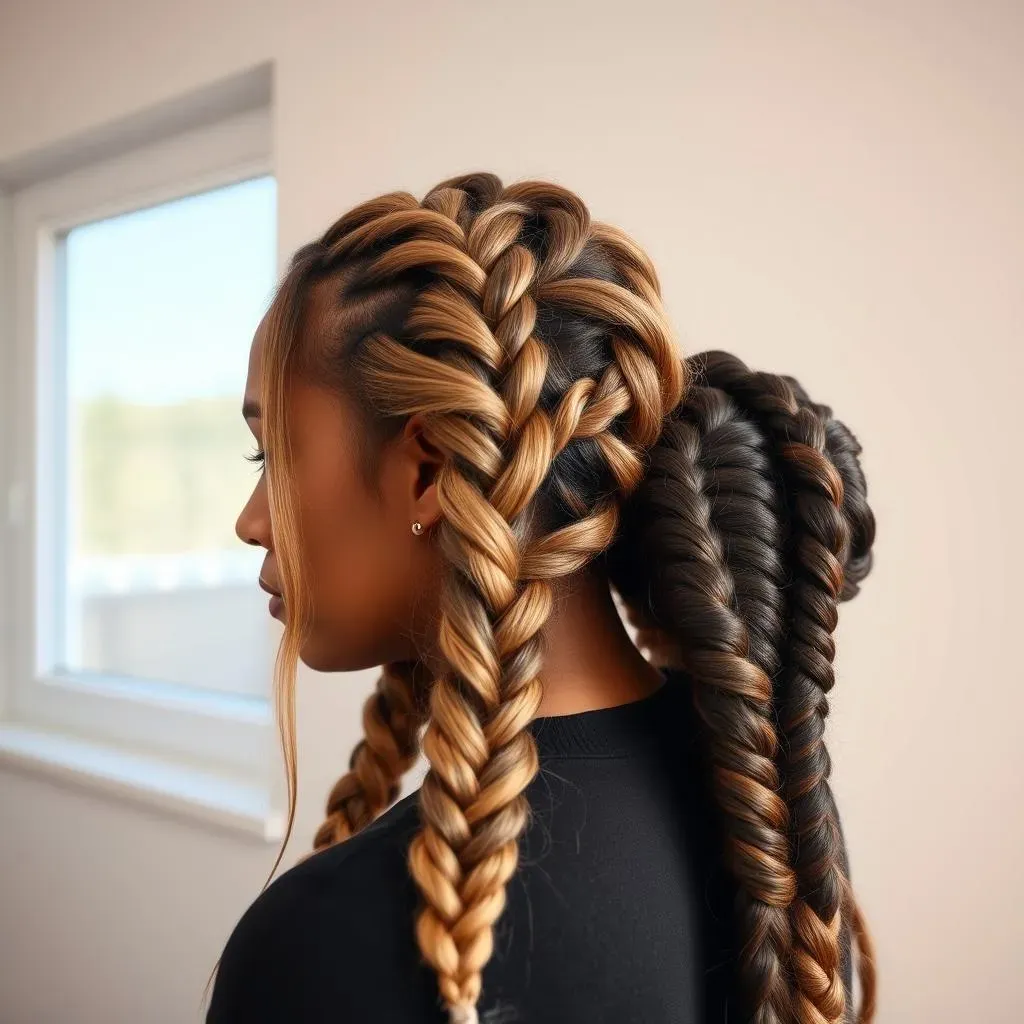Table of Contents
So, you're wondering, "Will braids damage my hair?" It's a totally valid question! Braids are a fantastic hairstyle – stylish, versatile, and perfect for protecting your hair. But, like any style, if not done right, braids can cause some issues. This article will be your ultimate guide to understanding the potential risks and learning how to braid your hair safely and beautifully. We'll explore the science behind braid-related hair damage, discussing how tight braiding, improper techniques, and neglecting hair care can lead to breakage, thinning, and even hair loss. We'll also cover the best braiding techniques for different hair types, offering practical tips and tricks to minimize damage. Whether you're a seasoned braider or a complete newbie, this comprehensive guide is designed to equip you with the knowledge to protect your hair while enjoying the stylish versatility of braids. Get ready to unravel the truth about braids and your hair health! Let's dive in and discover how to keep your hair looking fabulous and feeling healthy.
Understanding BraidRelated Hair Damage
Understanding BraidRelated Hair Damage
Tension and Traction
The biggest culprit behind braid-related hair damage is often excessive tension. Think of your hair follicles as tiny plants; too much pulling, especially near the roots, can weaken them, leading to breakage and even hair loss. This is particularly true for tightly braided styles that pull on the scalp. Imagine trying to pull a plant out of the ground—the roots are going to suffer! This is why it's crucial to ensure your braids aren't too tight. A good rule of thumb is that you should be able to comfortably run your fingers along your scalp beneath the braids without feeling any pulling or discomfort. If it hurts, it's too tight! Remember to take regular breaks from tight braids to let your scalp and hair follicles recover.
Many people find that certain braid styles are more prone to causing tension than others. For example, very small braids or those that are tightly packed together can put more stress on your hair than looser styles. Learning different braiding techniques can help you avoid putting excessive tension on your hair. For example, you might consider trying larger braids or looser styles to reduce the amount of stress on your hair follicles. If you're unsure about how to achieve a less-tight braid, there are tons of resources online. Check out our guide on how to style your braids for some helpful tips.
Braiding Style | Tension Level | Damage Potential |
|---|---|---|
Small, tight braids | High | High |
Large, loose braids | Low | Low |
Cornrows | Medium (depends on tightness) | Medium |
Friction and Manipulation
Beyond tension, friction plays a significant role in hair damage from braids. Think about it: your hair is constantly rubbing against itself and other surfaces within the braid. This constant friction can lead to breakage, split ends, and dryness. This is especially true if you are using extensions, which can create additional friction due to the difference in textures between your natural hair and the extension material. Adding synthetic hair to your braids can also cause friction and split ends over time. To mitigate friction, choose soft, smooth extensions that won't snag or pull on your hair. Avoid sleeping on rough fabrics like cotton pillowcases. And, when it comes to caring for your hair, remember that regular conditioning and moisturizing are essential to keep your hair healthy and strong, especially while wearing braids. Proper hair care can help you to avoid many of the issues that can be caused by braids.
Another factor to consider is the amount of manipulation your hair undergoes. Frequent re-braiding, especially without giving your hair adequate time to rest, can contribute to damage. Think of it like constantly bending a paper clip back and forth – eventually, it will break. Give your hair a break between braiding sessions to allow it to recover and reduce the risk of breakage. If you are concerned about your hair health, you might consider consulting with a hairstylist to discuss ways to minimize damage and maintain healthy hair. Also, consider checking out our article on whether your hair needs a break from braids.
- Minimize friction by using satin pillowcases.
- Use gentle detangling products.
- Avoid over-manipulating your hair.
Minimizing Damage: Braiding Techniques and Hair Care
Minimizing Damage: Braiding Techniques and Hair Care
Mastering the Art of Loose Braiding
Let's talk technique! The key to preventing braid-related damage is mastering the art of loose braiding. It's not about creating wispy, undone braids; it's about ensuring there's no excessive pulling on your hair. Think of it like this: you want your braids to be secure enough to stay in place, but not so tight that they're causing tension on your scalp. A good way to check is to gently run your fingers along your scalp beneath the braids—if you feel any pulling or discomfort, it’s too tight! Remember, the goal is to achieve a comfortable, secure style that doesn't compromise the health of your hair.
Practice makes perfect! Experiment with different braiding techniques to find what works best for your hair type and desired style. There are tons of fantastic tutorials online, and even better, you can consult a professional stylist for personalized guidance. Learning how to properly section your hair before braiding can make a huge difference in achieving a looser, more comfortable braid. Also, remember to take regular breaks between braiding sessions. Giving your hair a chance to rest and recover is crucial for maintaining its health and strength. Check out our guide on braid styling for inspiration.
- Practice braiding on a doll or friend before braiding your own hair.
- Use a wide-tooth comb to gently detangle your hair before braiding.
- Section your hair into smaller parts for easier braiding.
The Importance of Pre-Braiding Hair Care
Before you even begin braiding, proper hair care is crucial. Think of it as prepping your canvas before painting a masterpiece! Start by gently detangling your hair with a wide-tooth comb or your fingers. This will help to prevent breakage during the braiding process. Next, apply a leave-in conditioner or hair oil to moisturize and protect your strands. This will help to keep your hair soft and manageable, reducing friction and the risk of breakage. Remember, well-hydrated hair is less likely to break. This is especially important if you have dry or damaged hair, as moisturizing will help to strengthen your hair and make it more resilient to the stresses of braiding.
Once your hair is moisturized, consider using a protective styling product designed to help prevent breakage and reduce friction. These products often contain ingredients that will help to smooth your hair and protect it from damage during the braiding process. After braiding, continue to care for your hair by regularly moisturizing your scalp and hair. You can do this by using a hair oil or leave-in conditioner. Remember, you're not just braiding hair; you're caring for a delicate ecosystem! For more specific advice tailored to your hair type, you might want to check out our article on braids and hair health.
Hair Type | Pre-Braiding Care |
|---|---|
Fine, thin hair | Use a lightweight leave-in conditioner. |
Thick, coarse hair | Use a heavier leave-in conditioner or hair oil. |
Dry, damaged hair | Use a deep conditioner before braiding. |
Braids and Different Hair Types: A Detailed Look
Braids and Different Hair Types: A Detailed Look
Fine Hair Considerations
Fine hair presents unique challenges when it comes to braiding. Because it's delicate, it's more prone to breakage and damage from tension. Avoid extremely tight braids, opting instead for looser styles like Dutch braids or larger cornrows. Smaller braids can easily pull on your fine hair, leading to breakage and thinning. It's crucial to use gentle braiding techniques and to take extra care to avoid excessive pulling or tugging. Remember to condition your hair well before braiding to add strength and resilience.
Also, consider the frequency of braiding. Avoid braiding your fine hair too often. Give your hair regular breaks to allow it to recover. Over-braiding fine hair can lead to significant damage and hair loss. If you're unsure about how to manage fine hair, it's always a good idea to seek advice from a professional stylist specializing in fine hair. They can offer personalized tips and guidance to help you minimize damage and maintain healthy hair. For more styling ideas, check out our article on 6 braids hairstyles.
- Use a lightweight leave-in conditioner before braiding.
- Avoid tight braids and opt for looser styles.
- Give your hair regular breaks from braiding.
Thick and Coarse Hair
Thick and coarse hair can handle more tension than fine hair, but that doesn't mean you can get away with super tight braids! While your hair might be stronger, excessive tension can still lead to breakage and damage to the hair follicles. Focus on even tension distribution throughout the braid to avoid creating weak spots. Using the right tools, like a wide-tooth comb for detangling before braiding, can also make a difference. This helps prevent snags and pulling that can cause damage.
Even with thicker hair, frequent braiding and neglecting proper hair care can lead to damage. Make sure to deep condition regularly to keep your hair moisturized and healthy. Choosing the right braiding products can also help; look for products that are designed for thick or coarse hair and that provide extra protection against breakage. If your hair is particularly thick, you might consider using larger sections when braiding to reduce the overall tension. For inspiration on styles suited for thick hair, take a look at our post on 6 big braids hairstyles.
Braiding Technique | Suitable for Thick Hair? |
|---|---|
Small, tight braids | Potentially damaging |
Large, loose braids | Generally good |
Cornrows | Good, but avoid excessive tightness |
